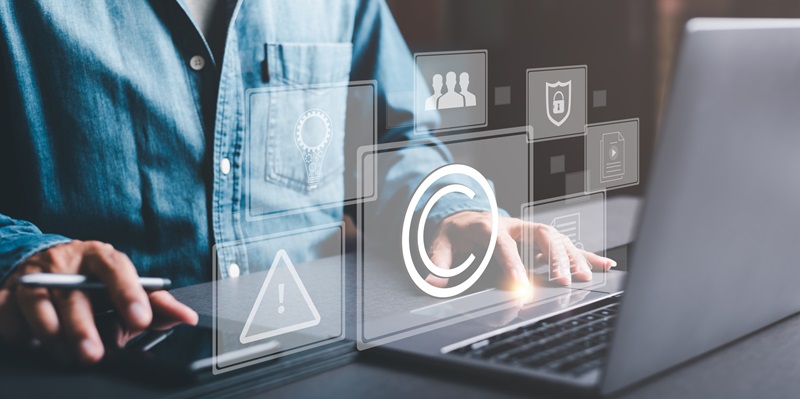As the digital realm continues to burgeon with innovation and interconnectivity, Web3 emerges as a paradigm shift shaping the future of the internet. This new era, grounded in decentralization, is redefining the concept of digital ownership and creating fresh challenges and opportunities in the arena of intellectual property (IP) rights. The ingenuity of Web3 lies in its potential to extend unparalleled control to creators and rights holders—a seismic shift from the centralized systems that currently dominate the Web2 space.
The Foundation of IP Protection in Web3
Blockchain Technology as a Guard of Originality
Blockchain technology stands as a sentinel for originality in the growing expanse of digital creation. Its immutable ledger system functions as an indelible defense against unauthorized duplication and plagiarism. By utilizing initiatives such as OriginStamp, creators can timestamp their works, securing a verifiable claim of authorship. Similarly, platforms like IPwe employ blockchain for an AI-driven approach to patent registry and authenticity analysis, pioneering a space where the provenance of ideas and inventions can be irrefutably established and protected.
The Emergence of Smart Contracts
Smart contracts represent a cornerstone for automated intellectual property rights enforcement within Web3. With their self-executing nature, these contracts encoded within blockchain systems dismiss the need for intermediaries. Creative minds can now dictate the terms of content usage with precision, and benefit from automated royalty payouts. OpenLaw and InvArch exemplify the progress in this field, equipping users with user-friendly tools for crafting smart contracts that embody legal agreements, thereby streamlining the IP management process.
Democratizing Ownership Through Tokenization
Tokenizing Intellectual Property
Tokenization serves as a bridge between abstract IP rights and tangible ownership. By representing ownership stakes as tokens, transactions become both secure and transparent, with the added guarantee of authenticity. Smart contracts sit at the core of this model, not only facilitating transfers of ownership but also dictating the fine print of licensing arrangements and royalty calculations. Consequently, this intersection of tokenization and smart contracts infuses IP ownership with newfound democratic possibilities, including participation in DeFi and expansion into NFT marketplaces.
Nonfungible Tokens (NFTs) and Digital Ownership
NFTs have captivated the collective imagination, injecting the concept of unmistakable digital scarcity into the IP conversation. These unique tokens champion the cause of digital ownership, allowing the blockchain-based attribution of assets ranging from art to music. However, clarification is necessary: holding an NFT is not synonymous with holding IP rights. Pioneering platforms like OpenSea and trendsetting entities such as the Bored Ape Yacht Club navigate this nuanced terrain, offering NFTs that sometimes convey complete intellectual property control to the beneficiary.
Innovative Governance with Decentralized Autonomous Organizations (DAOs)
DAOs as Custodians of IP Rights
Decentralized Autonomous Organizations (DAOs) embody the potential of collective IP management and governance. They offer a structure for joint resource control, decision-making, and the potential for effective enforcement of IP rights across a global network. Aragon represents a supportive infrastructure tailoring the DAO model for the pragmatic needs of IP governance, thereby pushing the boundaries of how digital assets and ideas might be collaboratively overseen in the Web3 landscape.
Strategies for Protecting IPs in the Web3 Era
Proactive IP Registration and Vigilance
In this new digital epoch, protecting IP requires proactivity. Experts suggest recording IPs onto blockchain registries as an essential step towards robust protection and instant verification of ownership rights. Coupled with encryption, such an approach fortifies the security of digital assets. Tools specifically designed for monitoring and infringement detection are also paramount for maintaining a strong defensive posture against IP violations, ensuring creators retain control over their intellectual property.
AI and Advanced Analytics for IP Enforcement
The dynamic nature of the Web3 environment calls for constant vigilance. AI and advanced analytics play a critical role in this ecosystem, helping to enforce IP rights by spotting potential infringements and examining trends in data usage. Leveraging these sophisticated technological advancements allows stakeholders to efficiently respond to and manage IP challenges, staying ahead of potential vulnerabilities in the fast-evolving Web3 framework.
Overcoming Challenges in Web3 IP Law and Security
Legal and Regulatory Hurdles
Although Web3 presents considerable promise for IP protection, it simultaneously brings forth an array of legal and regulatory challenges. The decentralized and often anonymous nature of this new internet calls for innovative legal frameworks capable of managing cross-jurisdictional complexities, balancing the rights of creators with the decentralized ethos of Web3. In this context, industry experts emphasize the necessity for laws and regulations that adeptly address these nuanced challenges.
Security and Smart Contract Vulnerabilities
Smart contracts are innovative tools, but they are not immune to security risks. Exploitation of vulnerabilities in smart contract code can lead to sizable losses and breaches of IP rights. It is therefore essential for the design and audit of smart contracts to uphold the highest security standards, ensuring these digital agreements offer robust protection for IP owners. As the Web3 ecosystem evolves, ongoing refinement of security practices and legal safeguards will be imperative for maintaining the integrity and sovereignty of intellectual property within this groundbreaking domain.

